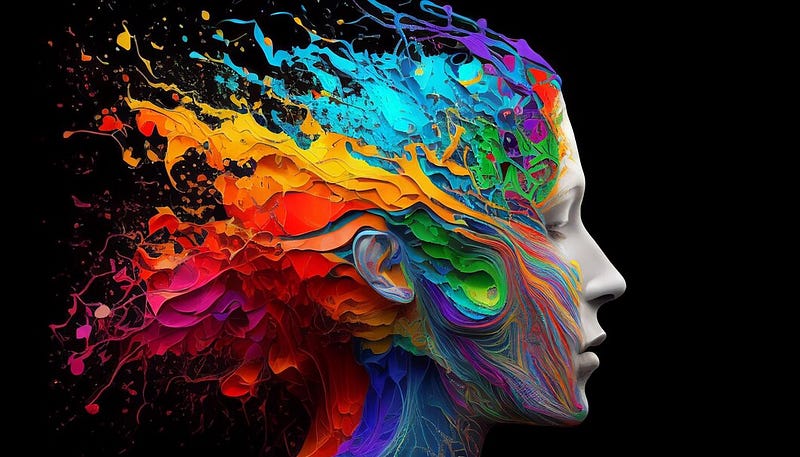# Understanding the Distinction Between Human Learning and AI
Written on
Chapter 1: The Nature of Intelligence
Recently, I encountered a thought-provoking statement regarding Artificial Intelligence (AI): “AI is automation and not synapse.” This phrase has lingered in my mind, prompting me to emphasize the necessity of distinguishing between human learning and computer learning in various presentations, articles, and discussions.
We often employ numerous human-centric metaphors to describe computer functions, such as (artificial) intelligence, (machine) learning, and memory (both RAM and REM). While these metaphors can be appealing and may assist in our understanding of technology, they often lead to misconceptions.
Is it appropriate to label AI as "intelligence"? Many experts argue against this classification. Some neuroscientists contend that referring to artificial intelligence as such is misleading; it is not truly artificial, as it is a product of human creation, and it lacks genuine intelligence, which emerges from organisms interacting with their environments.
Psychologists like Robert Epstein are openly critical of applying terms like “memory” to computers. In his essay “The Empty Brain,” he asserts: “Your brain does not process information, retrieve knowledge, or store memories. In short: your brain is not a computer.”
Section 1.1: Scientific Metaphors and Their Implications
Neuroscientist Lisa Feldman Barrett, in her book “7 1/2 Lessons about the Brain,” highlights that many terms we use to describe bodily functions, particularly those of the brain, are merely metaphors.
For instance, the idea that the left hemisphere of the brain is logical while the right is creative, or that the brain operates with a “System 1” for quick responses and a “System 2” for rational thought, illustrates how misleading these metaphors can be. Barrett emphasizes that while metaphors are valuable for simplifying complex subjects, they can become problematic when misconstrued as literal explanations.
Gareth Morgan, in “Images of Organization,” also underscores the significant role metaphors play in management theories, noting that they help us understand complex situations but can lead to partial understandings.
Chapter 2: Learning as Humans Do
The corporate learning landscape has been heavily shaped by the metaphor of organizations as machines. This perspective often leads to the erroneous belief that merely exposing individuals to information will suffice for learning and problem-solving.
A common misconception in corporate training is that a single course can bridge a “knowledge gap.” For example, a workshop on leadership might be expected to resolve issues of autonomy and control, or a one-time session on emotional intelligence could be seen as a solution to interpersonal conflicts. However, this approach overlooks the nuances of human learning, which cannot be reduced to mere information downloads.
Section 2.1: The Process of Human Learning
To grasp the essence of how humans learn, consider how you came to understand what a book is. You likely didn’t grasp its meaning by merely reading the definition in a dictionary. Instead, your first encounter with a book probably involved a nurturing context, like sitting on your mother's lap, where you heard the word "book" in relation to an object, a voice, and a broader environment.
This gradual recognition of patterns is at the heart of statistical learning theory. We learn through identifying regularities and patterns in our surroundings.
Section 2.2: Key Distinctions in Learning
While it is true that computers also learn through pattern recognition, there are critical differences between machine learning and human learning, specifically in the areas of regularity and emotional connection.
- Regularity: Unlike computers, which can rapidly store and process vast amounts of data, humans require consistent engagement with the material. This includes reflection, conversation, and practice. In essence, frequency plays a vital role in human learning.
- Affection: Human learning is profoundly influenced by emotional connections. For genuine learning to occur, learners must feel a sense of engagement and emotional involvement with the content.
Section 2.3: Corporate Learning Reimagined
Our capacity for learning is intricately linked to experiences, emotions, and interactions—elements that machines cannot replicate. Thus, as we navigate the use of terms like “artificial intelligence” or “machine learning,” we must remember that while these metaphors may simplify complex ideas, they ultimately fall short of capturing the essence of human learning.
This understanding is essential in the realm of corporate education, where learning strategies must account for the unique characteristics of human learners. By acknowledging and valuing the differences between human and machine learning, we can create more effective and transformative educational environments.
In conclusion:
- Human versus machine learning: Acknowledging the fundamental differences is crucial.
- Caution with scientific metaphors: These can simplify concepts but may lead to misinterpretations when taken too literally.
- Regularity and affection: Human learning thrives on frequency and emotional engagement, contrasting with machine data storage.
- Rethinking corporate education: Strategies must honor the distinct nature of human learning, moving beyond simplistic information transfer.

If you want to learn more, consider reading:
- Barrett, Lisa Feldman, “Seven and a Half Lessons about the Brain”
- Morgan, Gareth, “Images of Organization”